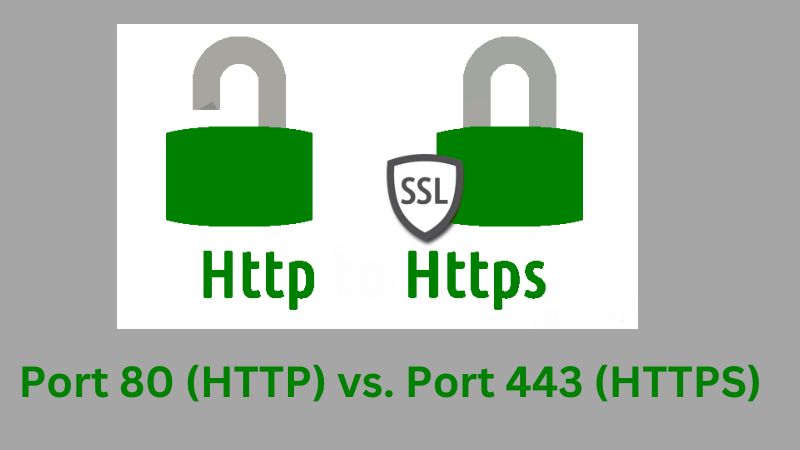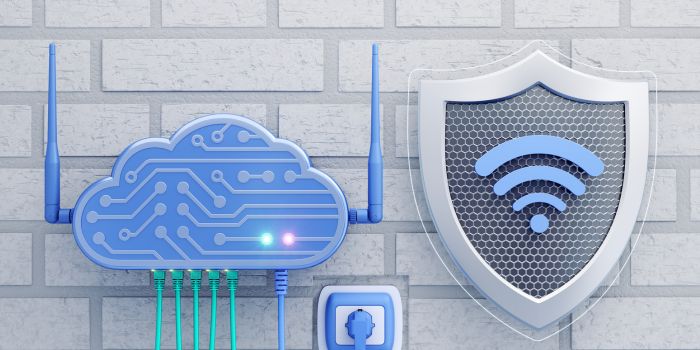The primary difference between Port 80 and Port 443 lies in the level of security they offer. Port 80 facilitates an unencrypted connection, whereas Port 443 is designed to support an encrypted connection, providing a higher level of security.
The internet is a vast network of interconnected devices, and the way these devices communicate with each other is through ports. Two of the most commonly used ports are Port 80 and Port 443, which are assigned to HTTP and HTTPS protocols, respectively. Port 80 is assigned to HTTP (Hypertext Transfer Protocol), which is used for transmitting web pages across the Internet. However, the data transferred via Port 80 is not encrypted, making it less secure.
On the other hand, Port 443 is assigned to HTTPS (Hypertext Transfer Protocol Secure), which is a more secure version of HTTP. Data transferred via Port 443 is encrypted, ensuring that the information remains private and secure during transmission.
The main difference between these two ports lies in the level of security they provide during data transmission. While Port 80 allows for unencrypted data transfer, Port 443 ensures that the data is encrypted and secure. This is why most websites today prefer using HTTPS over HTTP.
Related post: Best free password manager Tools to use
What is a Port?
A port is a virtual communication endpoint used for network connections. It is a number assigned to a specific protocol. Ports live in software designed to operate on devices and connect over the web. Computers receive a vast amount of data, and the port helps them distinguish different types of traffic and makes a computer understand what it should do with the received or sent data over the same network connection.
Transfer Protocol: HTTP uses TCP (Transfer Control Protocol), while HTTPS uses TLS (Transport Layer Security), which is a secure form of TCP.
Vulnerability to Attacks: According to the SMB vulnerability report, 65% of attacks target the three main ports: SSH-22/TCP, HTTPS-443/TCP, and HTTP-80/TCP.
Introduction: Port 80 was introduced by Tim Berners-Lee in 1991 in the HTTP 0.9 document. Port 443 was officially published in RFC 1700.
Connection to WWW: Port 80 usually connects to the WWW (World Wide Web). A user, with the help of this port, can connect to webpages available on the internet.
Security Indicators: Once HTTPS is enabled on the browser, there will be security indicators like a padlock and HTTPS before the domain name.
Server’s Identity Authentication: The server’s identity will be authenticated on the domain is running.
Port 8080: Port number 8080 is only recognizable for the HTTP protocol.
Read here: Everything You Need To Know About SSL Certificates
What is Port 80?
Port 80 is assigned to HTTP, which is for connecting different users to an insecure network. The web traffic that passes through the port remains in plain text. However, with the introduction of HTTPS, most browsers and search engines now prefer port 443- a default port for the HTTPS protocol. Port 80 is used to send and receive page requests from an HTTP server.
What is Port 443?
Port 443 refers to HTTPS, a secure protocol that enables encrypted communication between the server and the browser. Due to rising cybercrime, security is a paramount requirement for any website. Port 443 directs the traffic to the right path and helps the device identify the type of service that is being requested.
Port 80 Vs. Port 443 – The Key Differences
The main difference between Port 80 and Port 443 is the level of security they provide. Port 80 provides an unencrypted connection, whereas Port 443 supports an encrypted connection. Port 80 permits data transfer in plain text, while Port 443 allows data transmission via a protected network. Any attempt by the user to visit a non-HTTPS web page will result in an insecure warning.
Here are some additional differences between Port 80 (HTTP) and Port 443 (HTTPS):
Transfer Protocol:
HTTP uses TCP (Transfer Control Protocol), while HTTPS uses TLS (Transport Layer Security), which is a secure form of TCP.
URL Structure:
In HTTP, URLs begin with “http://”, while in HTTPS, URLs start with “https://”.
Encryption:
HTTP does not use encryption, which means data is transferred in plain text. On the other hand, HTTPS encrypts network data packets before data transmission takes place.
Certificates:
HTTP does not require any certificates, while HTTPS needs SSL Certificates.
Search Ranking:
HTTPS can help to improve search ranking, while HTTP does not have this benefit.
Data Security:
Users are generally more confident about the security of their data when using HTTPS compared to HTTP.
Speed:
HTTP is generally faster than HTTPS because it doesn’t have to encrypt the data. However, the difference in speed is usually negligible for most users.
Usage:
Due to the security benefits, HTTPS is generally preferred and is being increasingly adopted by websites. HTTP is being phased out and should be avoided.
Find here: What is Cyber Security and How to Stay Protected?
Conclusion
In summary, port 80 is used for unencrypted HTTP traffic, while port 443 is used for encrypted HTTPS traffic. Both ports are commonly used for accessing websites. However, port 443 is typically preferred for secure transactions because it encrypts the data being transmitted. Today, all major websites have switched from HTTP to HTTPS.
Port 80 and Port 443 are both crucial for internet communication, but they serve different purposes. Port 80, associated with HTTP, provides an unencrypted, less secure connection and is being phased out. On the other hand, Port 443, associated with HTTPS, offers an encrypted, secure connection and is now the standard for most web traffic. The shift from HTTP to HTTPS is a reflection of the growing emphasis on data security in today’s digital age.
FAQ’s
What is a Port?
A port is a virtual communication endpoint used for network connections. It is a number assigned to a specific protocol.
What is Port 80?
Port 80 is assigned to HTTP, which is for connecting different users to an insecure network. The web traffic that passes through the port remains in plain text.
What is Port 443?
Port 443 refers to HTTPS, a secure protocol that enables encrypted communication between the server and the browser.
What is the main difference between Port 80 and Port 443?
The main difference between Port 80 and Port 443 is the level of security they provide. Port 80 provides an unencrypted connection, whereas Port 443 supports an encrypted connection.
Why is Port 443 preferred over Port 80?
Port 443 is typically preferred for secure transactions because it encrypts the data being transmitted. Today, all major websites have switched from HTTP to HTTPS.
What happens if a user tries to access a non-HTTPS web page?
Users will get an insecure warning if they try to access a non-HTTPS web page.




